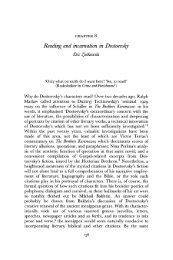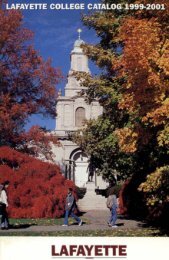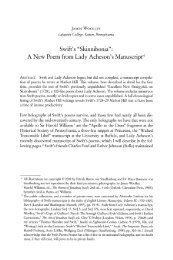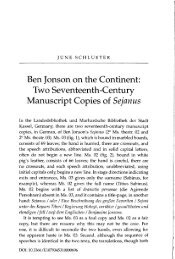You also want an ePaper? Increase the reach of your titles
YUMPU automatically turns print PDFs into web optimized ePapers that Google loves.
194 JUNE SCHLUETER<br />
which the illustration is based. But the inclusion of the four Winds, to complete<br />
the cosmic portrait, confirms the print’s allegorical nature, as does its<br />
place in the Circulus vicissitudinis rerum humanarum, a series of eight prints<br />
designed to present a moral lesson (pointed in Latin verses). 8 The van Heemskerck<br />
print combines the historical moment of the ceremonial procession<br />
with the moral significance of the Triumph of Mundus, embellishing, stylizing,<br />
and idealizing what a spectator would have seen.<br />
The album painting, by contrast, is unmistakably realistic: the scene we see<br />
is the scene a person standing at the roadside would have seen. The objects<br />
the figures carry do represent the four elements, but the allegory here is neither<br />
coherent nor sustained. Compare the headgear of the four elements on<br />
the car in the van Heemskerck print with the plumed helmets and crown of<br />
those on horseback in the album painting. In the print, each wears a further<br />
token of her allegorical status; in the album, neither the headgear nor the<br />
costumes contribute to or even complement the allegorical message. Indeed,<br />
in the album painting, it would appear that the significance of the objects is<br />
embodied not in the present moment but in an anticipated one. Clearly, there<br />
is a performance element to the painting, but the performance is not yet realized.<br />
Instead, there is a sense of anticipation, with a future event promising<br />
to actualize all the objects: falcon, church, boat, flame, helmets, crown, long<br />
flowing hair, and masks. In short, a person along the roadside and a currentday<br />
reader of the painting would see not an allegorical procession but a<br />
troupe of traveling players, with objects and gear that attract attention along<br />
the way and serve as stage properties at a future time.<br />
Where, though, might Hartmann have seen a troupe of traveling players?<br />
And who might these players be?<br />
Reconstructing the chronology of alba <strong>amicorum</strong> is a knotty task, for except<br />
for the early leaves of the album, which are conventionally reserved for<br />
princes of high estate (King James, Frederick V, the Landgraves of Germany,<br />
for example), signature pages were selected arbitrarily: even when two people<br />
were asked to sign on the same occasion, one might choose f. 120, the other<br />
f. 45v. Moreover, while many contributors inscribe both the date and place<br />
of signing, just as many do not, and watercolor illustrations are often undated<br />
and unidentified. Still, by mapping the chronology of an album, one can establish<br />
context and often infer where and when an illustration was done. In<br />
the case of the Hartmann album, entries span twenty years, from 1597 to<br />
1617. 9 Those that indicate place fall into two time frames: 1605–7, with numerous<br />
entries from Marburg (1605–6) and a few from Giessen, Tübingen,<br />
and Hamburg (1606–7), and 1614–17, with entries from Strasbourg (Argentoratum)<br />
(1614–15), Paris (Lutetia Parisiorum) (1615), Angers (1615–16),<br />
England (1616), and Paris again (1616–17). Dedications to Hartmann indicate<br />
that he was a degree candidate at Marburg, which means he kept his<br />
album while a university student there. In or before 1614, Hartmann traveled<br />
................. 16818$ $CH7 05-30-08 13:47:56 PS<br />
PAGE 194











